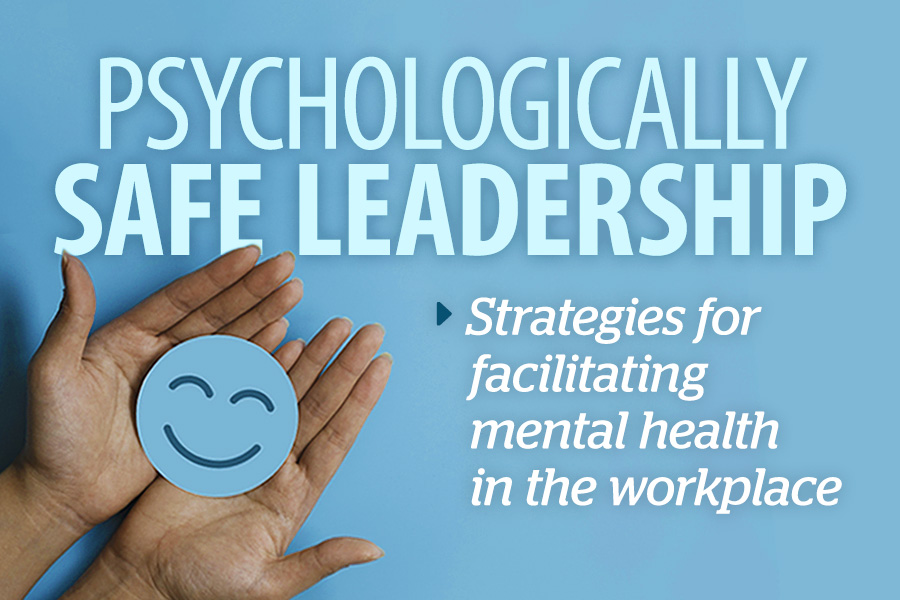
Creating psychologically safe interactions in the workplace
By Bill Howatt and Troy Winters
Anyone who wants to be a psychologically safe leader must be open and willing to learn how to build trusted and supportive working relationships.
 EDITOR’S NOTE: ‘Psychologically Safe Leadership: Strategies for facilitating mental health in the workplace’ is a web series in partnership with Dr. Bill Howatt of Howatt HR Consulting in Ottawa, and Troy Winters, senior health and safety officer at the Canadian Union of Public Employees (CUPE) in Ottawa.
EDITOR’S NOTE: ‘Psychologically Safe Leadership: Strategies for facilitating mental health in the workplace’ is a web series in partnership with Dr. Bill Howatt of Howatt HR Consulting in Ottawa, and Troy Winters, senior health and safety officer at the Canadian Union of Public Employees (CUPE) in Ottawa.
One way for a leader to evaluate whether they are fostering an inclusive work environment is to examine the effectiveness of their interpersonal interactions in group settings and one-on-one meetings with team members and peers.
The Government of Canada estimates that only 23 per cent of Canadian workers would feel comfortable talking to their employer about a psychological health issue, often because they don’t feel their workplace is psychologically safe.
The employee-leader relationship is a critical factor for mitigating this reluctance that is determined one interaction at a time. Any leader who wants to be a psychologically safe leader must be open and willing to learn how to build trusted and supportive working relationships.
When employees feel disconnected from their leaders or peers, they are unlikely to feel safe to speak up and provide input, ideas, or feedback. They are apt to feel uncertain about the future and what is going to happen to them. If left unchecked, these feelings can lead to negative emotions such as loneliness that can profoundly negatively impact their mental state and emotional well-being.
Coaching tips for improving interactions
“Psychologically safe leaders know every interaction is important — period.” – Dr. Bill Howatt
Every positive interaction with an employee can create trust.
When employees feel safe and trust their leaders, they are more open to share and focus on the work at hand versus being distracted by worrying that their leader does not like them, or worse.
The following microskills point out the little things that matter for creating a psychologically safe workplace.
Active listening and asking good questions
When an employee comes to tell you something, it is because they believe it is important. Focusing and creating space to ensure they feel heard and are not being brushed off requires intention. Active listening is an effective skill that can slow you down and help you understand what they are communicating.
This is the art of listening to the words, tone, intonation, and emotion while observing body language and facial expressions. After listening, validate whether you fully understand what they are saying by summarizing and asking clarification questions. The end goal of this approach is for the employee to walk away feeling they have been heard.
Psychologically Safe Workplace Awards provide employers tools, data on mental health
Different styles for different audiences, but consistency in messaging
Be open to the possibility that not all employees will have the same communication style or need the same mode of communication or frequency. Secure, effective, and safe interactions with employees require asking and following up to determine if they are working for them.
Some will be happy with informal communications; others will want structure and set meetings. It is helpful when the leader and employee get on the same page about how they will interact regularly and what modes they will use to ensure their interactions game plan is in place. This creates space for employees to get the information they need how they want and a way for them to ask questions when they feel unsure or concerned.
“While inclusiveness should be a broad goal as a leader, it comes down to individual relationships with each of your team members.” – Troy Winters, CRSP
Be aware of digital communications’ limitations
Not all communication mediums are equal. Do not underestimate the benefit of in-person interactions.
Facilitating meaningful, authentic interactions is more difficult when all are done through a computer screen or phone calls. Slow down and create space and opportunity for employees to share by including open space in planned calls for just chatting rather than always focusing on an agenda item.
Look for feedback and get help when you need it
Not all your employee relationships will be perfect. Accept your part and be open to exploring how you can behave differently to improve challenging interactions or employee relationships.
Prepare for this kind of challenge by building relationships with other leaders within or outside your organization who can be sounding boards and provide advice. Own your behaviour and work at improving your interactions.
Remember your limits
Be mindful of your limitations and know when to take a break from the demands of being a leader when you have had enough interactions for the day. Living life fully and meaningfully outside of work is essential to your self-care, so you must know when to take a break from work.
This helps you recharge and restore the energy you need to facilitate positive and psychologically safe interactions. Allowing yourself to become too tired can negatively impact how you show up and behave as a leader, adversely impacting the quality of your interactions.
 Dr. Bill Howatt is the Ottawa-based president of Howatt HR Consulting in Ottawa.
Dr. Bill Howatt is the Ottawa-based president of Howatt HR Consulting in Ottawa.

Troy Winters is a senior health and safety officer at the Canadian Union of Public Employees (CUPE) in Ottawa.